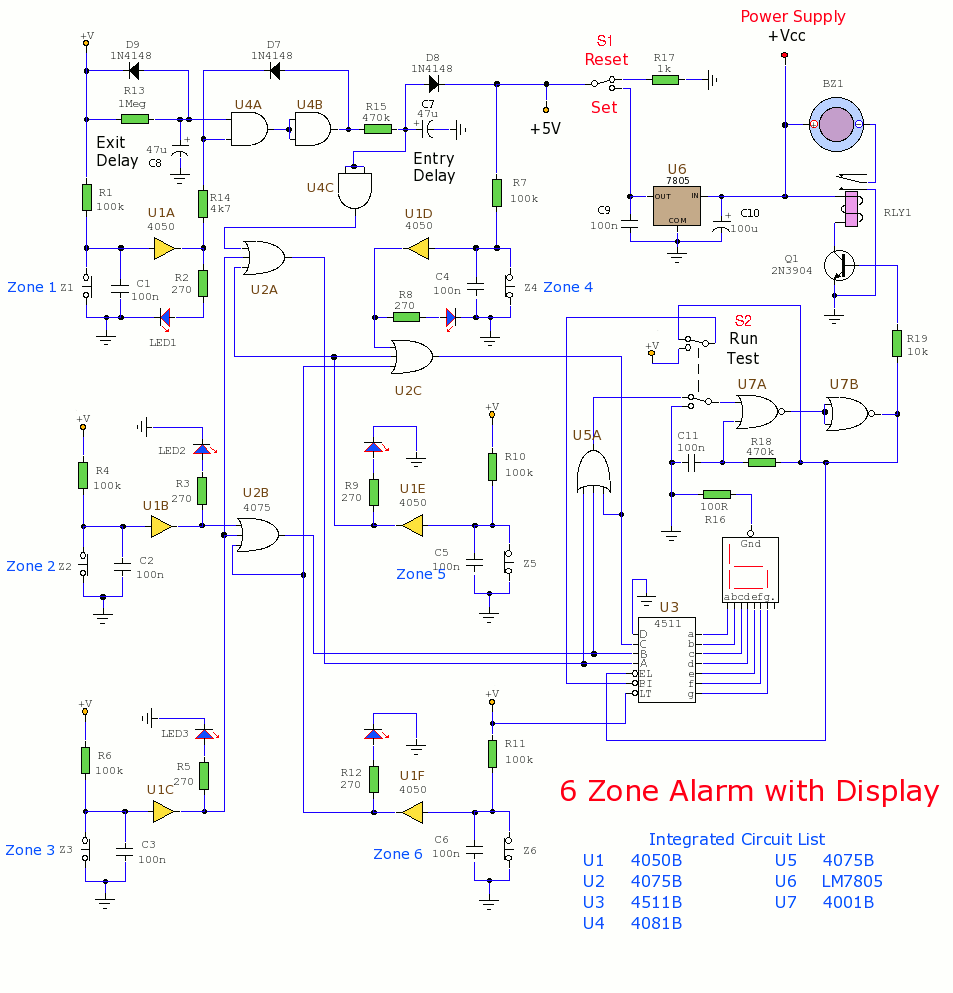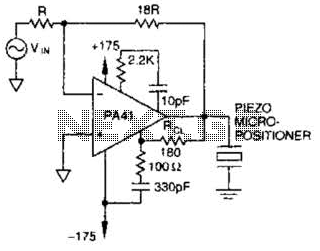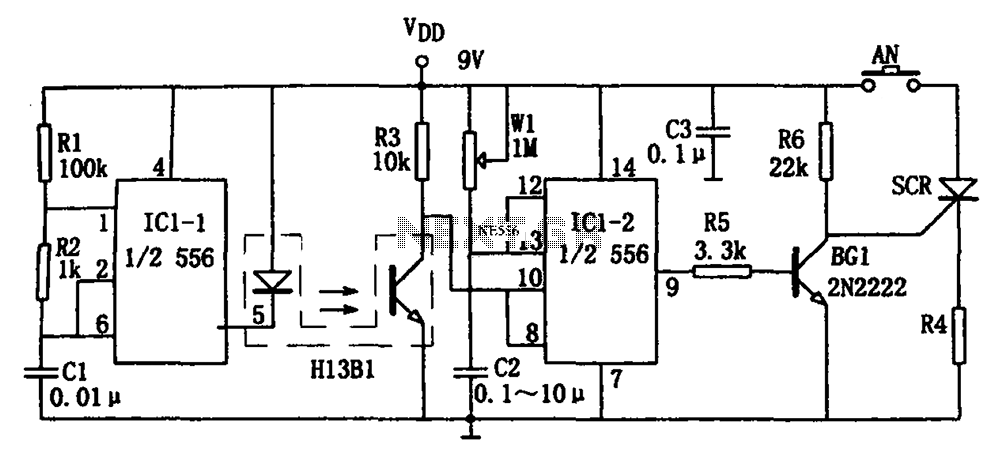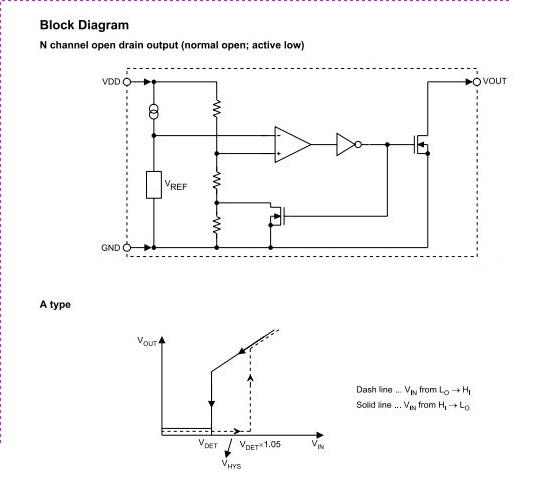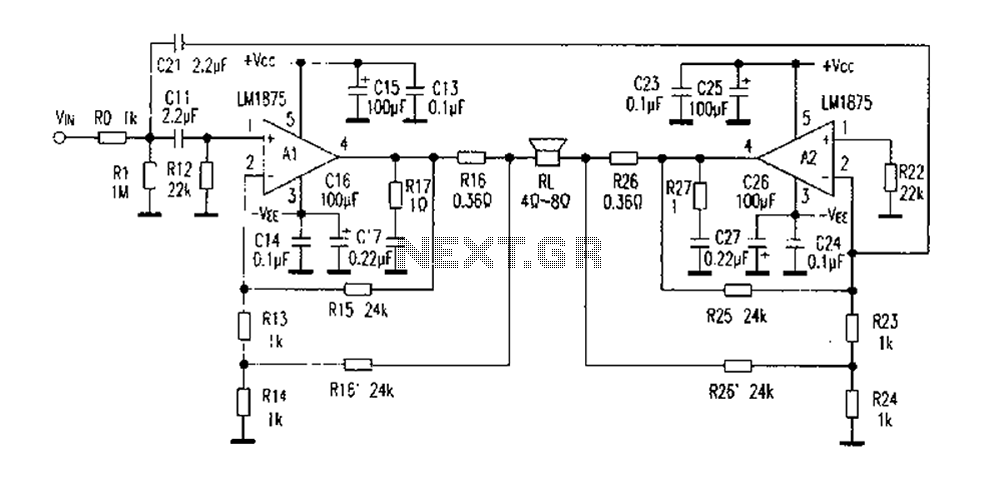
Metal Detector CS209A Circuit
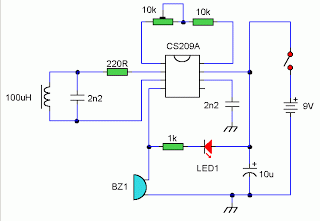
A single-chip metal detector with a detection range of a few inches. This device is useful for identifying nails or screws in walls and floors, as well as locating buried mains cables. The core of the metal detector circuit is a single integrated circuit (IC), the CS209A, manufactured by Cherry Semiconductor. The detector includes a single 100µH choke, which is part of an external LC circuit where the inductance is modified by the proximity of metal objects. The change in oscillation is amplified and demodulated. LED 1 will illuminate, and a buzzer will sound when the choke's inductance changes. The metal detector setup is straightforward; VR1 is adjusted with the choke positioned away from any metal source until the LED lights and the buzzer sounds. The control is then backed off until the LED turns off and the buzzer stops. When the choke comes into contact with any metal object that alters its inductance, LED 1 and the buzzer will activate.
The metal detector circuit operates on the principle of inductive sensing, utilizing an LC oscillator configuration to detect nearby metallic objects. The CS209A IC serves as the primary control unit, integrating the necessary functions for signal generation and processing. The 100µH choke is critical in forming the LC circuit, where its inductance value is sensitive to external metallic influences. As the choke approaches a metal object, the inductance increases or decreases, leading to a corresponding change in the oscillation frequency of the circuit.
The output from the oscillator is fed into an amplifier stage within the CS209A, which boosts the signal for further processing. The demodulation stage interprets the changes in frequency, triggering the visual and auditory indicators. LED 1 serves as a visual cue, illuminating to indicate the presence of metal, while the buzzer provides an audible alert, enhancing user feedback.
The calibration process is facilitated by variable resistor VR1, which allows the user to set a baseline for the detector's sensitivity. Initially, VR1 is adjusted to ensure that the LED activates and the buzzer sounds when the choke is away from any metallic objects. This establishes a threshold, ensuring that minor fluctuations in the environment do not trigger false positives. Once calibrated, the user can then back off the control until the indicators deactivate, establishing a clear operational state.
In practical applications, this metal detector can be employed in various scenarios, such as construction sites for locating hidden fasteners or utilities, and in DIY projects for ensuring safety while drilling or cutting into walls. The simplicity of the circuit design, combined with the effectiveness of the CS209A IC, provides an accessible solution for metal detection needs.A single chip metal detecor with a range of a few inches. This is useful for detecting nails or screws in walls and floors, or for locating buried mains cable. The heart of the metal detector circuit is a single IC the CS209A made by Cherry Semiconductor. The detector, is a single 100uH choke. The IC has an integral oscillator the choke forms part of an external LC circuit, its inductance being altered by the proximity of metal objects. It is the change in oscillation that is amplified and demodulated. Led 1 will light and the buzzer will sound when the choke change sinductance. The Metal Detector set up is easy, VR1 is adjusted with the choke away from any metal source so that the LED lights and buzzer sounds. The control is backed off so that the LED goes out and buzzer stops. Now when the choke comes into contact with any metal object that alters its inductance, LED 1 and the buzzer will activate.
🔗 External reference
The metal detector circuit operates on the principle of inductive sensing, utilizing an LC oscillator configuration to detect nearby metallic objects. The CS209A IC serves as the primary control unit, integrating the necessary functions for signal generation and processing. The 100µH choke is critical in forming the LC circuit, where its inductance value is sensitive to external metallic influences. As the choke approaches a metal object, the inductance increases or decreases, leading to a corresponding change in the oscillation frequency of the circuit.
The output from the oscillator is fed into an amplifier stage within the CS209A, which boosts the signal for further processing. The demodulation stage interprets the changes in frequency, triggering the visual and auditory indicators. LED 1 serves as a visual cue, illuminating to indicate the presence of metal, while the buzzer provides an audible alert, enhancing user feedback.
The calibration process is facilitated by variable resistor VR1, which allows the user to set a baseline for the detector's sensitivity. Initially, VR1 is adjusted to ensure that the LED activates and the buzzer sounds when the choke is away from any metallic objects. This establishes a threshold, ensuring that minor fluctuations in the environment do not trigger false positives. Once calibrated, the user can then back off the control until the indicators deactivate, establishing a clear operational state.
In practical applications, this metal detector can be employed in various scenarios, such as construction sites for locating hidden fasteners or utilities, and in DIY projects for ensuring safety while drilling or cutting into walls. The simplicity of the circuit design, combined with the effectiveness of the CS209A IC, provides an accessible solution for metal detection needs.A single chip metal detecor with a range of a few inches. This is useful for detecting nails or screws in walls and floors, or for locating buried mains cable. The heart of the metal detector circuit is a single IC the CS209A made by Cherry Semiconductor. The detector, is a single 100uH choke. The IC has an integral oscillator the choke forms part of an external LC circuit, its inductance being altered by the proximity of metal objects. It is the change in oscillation that is amplified and demodulated. Led 1 will light and the buzzer will sound when the choke change sinductance. The Metal Detector set up is easy, VR1 is adjusted with the choke away from any metal source so that the LED lights and buzzer sounds. The control is backed off so that the LED goes out and buzzer stops. Now when the choke comes into contact with any metal object that alters its inductance, LED 1 and the buzzer will activate.
🔗 External reference
